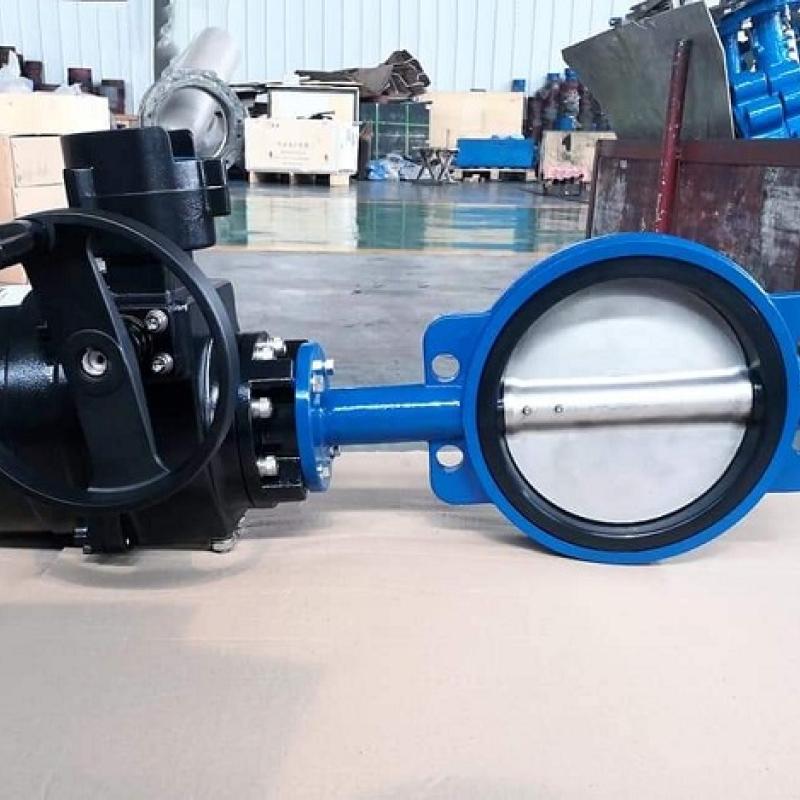Gate valves are characterised as having either a rising or a nonrising stem. rising stems offer a visual indication of valve function due to the fact the stem is connected to the gate such that the gate and stem upward push and lower together because the valve is operated. nonrising stem valves may additionally have a pointer threaded onto the upper end of the stem to suggest valve role, since the gate travels up or down the stem on the threads with out elevating or reducing the stem.
Contact Now
Gate valves are characterised as having either a rising or a nonrising stem. Rising stems provide a visual indication of valve position because the stem is attached to the gate such that the gate and stem rise and lower together as the valve is operated. Nonrising stem valves may have a pointer threaded onto the upper end of the stem to indicate valve position, since the gate travels up or down the stem on the threads without raising or lowering the stem.
Contact Now
Gate valves normally have flanged ends which are drilled according to pipeline compatible flange dimensional standards.
Contact Now
Gate valves normally have flanged ends which are drilled according to pipeline compatible flange dimensional standards. Gate valves are typically constructed from cast iron, ductile iron, cast carbon steel, gun metal, stainless steel, alloy steels, and forged steels.Gate valves are characterised as having either a rising or a nonrising stem. Rising stems provide a visual indication of valve position because the stem is attached to the gate such that the gate and stem rise and lower together as the valve is operated.
Contact Now
Gate valves normally have flanged ends which are drilled according to pipeline compatible flange dimensional standards.
Contact Now
Gate valves commonly have flanged ends which are drilled in step with pipeline compatible flange dimensional standards. gate valves are commonly made out of cast iron, ductile iron, cast carbon metallic, gun metallic, stainless-steel, alloy steels, and forged steels.Gate valves are characterised as having both a growing or a nonrising stem. growing stems provide a visual indication of valve role because the stem is connected to the gate such that the gate and stem upward thrust and decrease collectively as the valve is operated.
Contact Now
Resilient seated butterfly valve is a double flanged design which can be used for dead-end service .This butterfly valve series has many of the design features and benefits such as high Cv ratings ,minimum parts exposed to the line media ,greater reliability and a proven record of long service life .A major design advantage of this valve product lines is international compatibility.SizeDN100-DN1800DN100-DN1800Working pressure16Bar10BarShell24Bar15BarSeal18Bar11BarOperating Temperature-40℃~+160℃Operating EnvironmentBallast and bilge system &nbs
Contact Now
Cast Iron / Ductile Iron metal sealed flanged gate valveDesign and manufacture according DIN3352Flanged PN16 according to EN1092-2/DIN 2501 PN10 &PN16Face to face according to EN558-1 series 14Test and inspection according EN12266Size DN50-DN600Working Pressure:PN10/PN16Working conditionsSuitbale for :Water,-10℃ to + 110℃ below 0℃ only for water with added antifreeze fluids
Contact Now
The pneumatic butterfly valve is composed of a pneumatic actuator and a butterfly valve. The pneumatic butterfly valve is a pneumatic valve that uses a circular butterfly plate that rotates with the valve stem to realize the opening and closing. It is used more and more on medium-bore pipes. Pneumatic butterfly valve classification: stainless steel pneumatic butterfly valve, hard seal pneumatic butterfly valve, soft seal pneumatic butterfly valve, carbon steel pneumatic butterfly valve.
Contact Now
Check valve is to rely on the flow of the medium itself and automatically open and close valve disc, used to prevent the media flow back valve, also known as check valve, one-way valve, countercurrent valve, and back pressure valve. Check valve is a kind of automatic valve, its main function is to prevent media backflow, prevent pump and drive motor reverse, as well as the discharge of container medium. Check valves can also be used to supply lines in which pressure may rise to exceed system pressure in the auxiliary system.
Contact Now




















